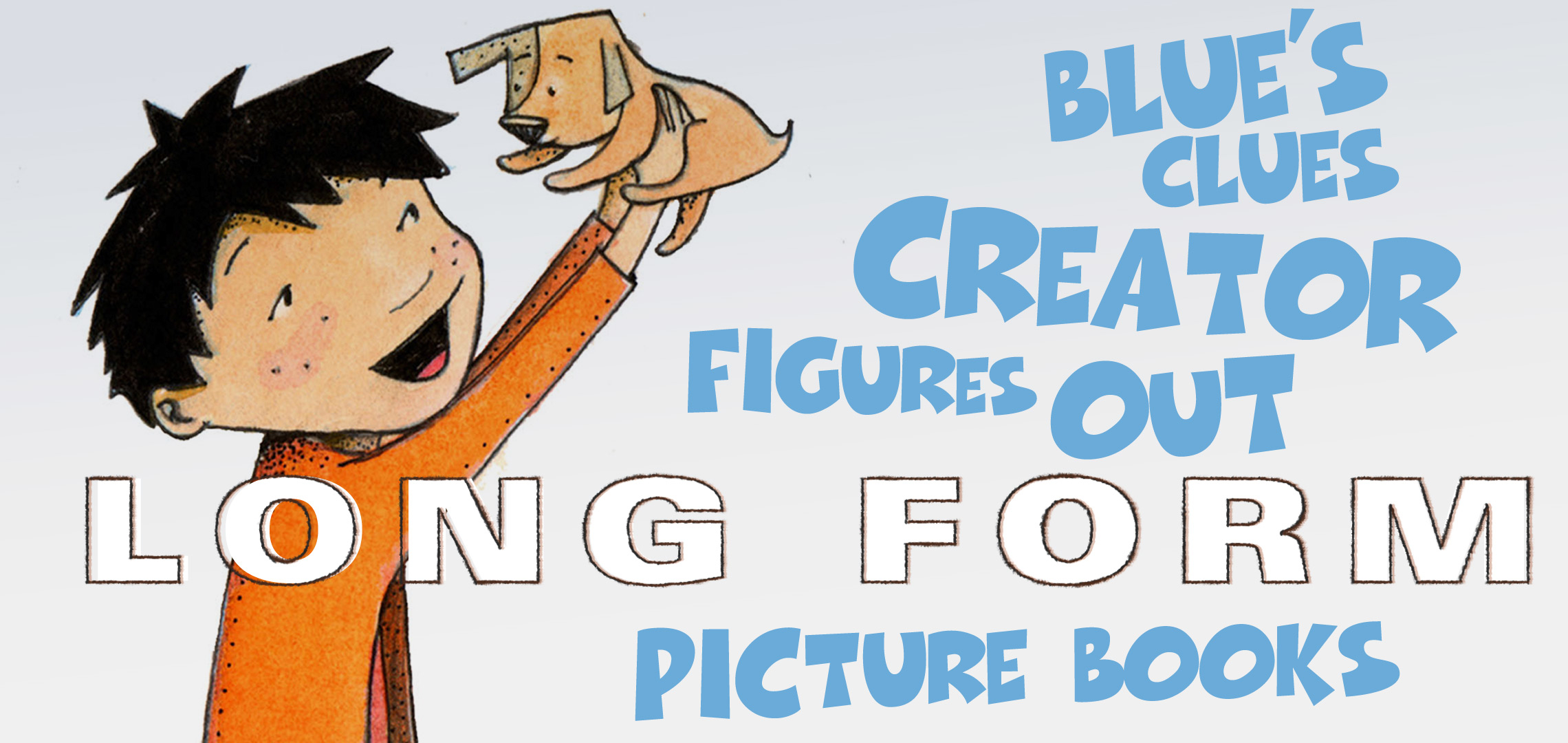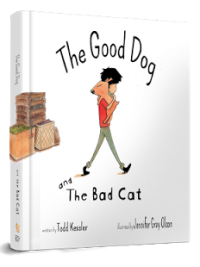Blue's Clues Creator Figures Out Attention Spans

Whoever says writing a children’s picture book is easy has either never written a good one or has never read a book aloud to a child. Too many show cute widdle anthropomorphic animals and feature sing-song rhyme schemes but are tone-deaf when it comes to what kids will actually pay attention to and what the grownups reading them will be able to stomach. Todd Kessler knows, more than most, how to really get kids’ attention. He created the popular preschool children’s show Blue’s Clues, which defied conventional wisdom and kept kids’ attention for a full half-hour of a single story line. Now, he’s looking to do for books what he did for preschool TV, with his The Good Dog series of picture books that are both long form and engaging for kids and their grownups. What’s the secret formula for precious attention spans? FTW asked him in the interview below the news. Also, what is it with kids’ books and dogs?
First, the News

INDIEFAB Finalists! Here are the finalists for our 2015 INDIEFAB Book of the Year Awards, proving that quality does not need to come from giant publishing conglomerates. Take a look at these books (searchable by genre) and then dare tell us that the indie publishing revolution has not arrived!

Decent Proposals: The book proposal is really the “secret sauce” of nonfiction books. Standard practice for nonfiction book authors, a proposal is basically the book’s business plan. Business author and blogger Barry Silverstein lists the components of a winning proposal.
New Indie Releases: It’s (almost) spring, and there are tantalizing new book titles popping up. In this selection, you’ll find a children’s book that teaches the value of healthy living and an eye-opening memoir from a journalist who’s been to Afghanistan and back.
Featured Reviews of the Week
Tax Reform with the 20/20 Tax, by James C. Tanner. This painstakingly comprehensive new tax proposal warrants serious attention from policymakers and tax professionals. Reviewed by Barry Silverstein.
Widow, by Judy Crowell. This open, honest, and revealing memoir looks back on a life full of great loves and adventures. Reviewed by Robin Farrell Edmunds.
The Broken Places, by Joseph McBride. This unflinching account of one man’s descent into temporary madness is certain to move those who have ever felt at odds with the world around them. Reviewed by Michelle Anne Schingler.
The Toothless Fairy, by Timothy Jordan. Much like her beloved taffy, this fairy’s outer wrapper and soft inner core are sure to bring smiles and possibly a craving for sweets. Reviewed by Pallas Gates McCorquodale.
The California Current, by Stan Ulanski. This celebration of Pacific ecosystems encourages conservation and an appreciation of biodiversity. Reviewed by Kristen Rabe.
Todd Kessler
When Blues Clues first aired, many parents were baffled at how/why this seemingly simple program grabbed their kids’ attention. How did you do it? Secret subliminal mind control?

Todd Kessler

There was absolutely nothing secret or subliminal about it. We simply sat down with kids and tried out our ideas with them. If you spend time with children and really listen to them, you gain a deeper understanding of how to engage them. The popular belief at the time was that preschoolers had “short attention spans,” and so any preschool TV program had to be in short segments no longer than three minutes each. But there was no real evidence to support this notion. I knew from my own experience that if you tell kids a really good story they will remain engaged for an extraordinary amount of time.
I developed Blue’s Clues as a continuous half hour narrative because I knew it would work. TV executives were sure it would fail. But Blue’s Clues tested with 20 percent higher attention than Sesame Street, so they had no choice but to air the program. The rest is history.
For the rest of the interview with Todd Kessler, please visit our website!
